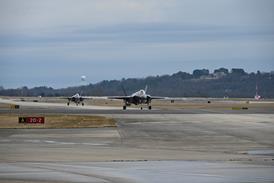The US Federal Aviation Administration has issued a notice of proposed rulemaking (NPRM) that would extend the mandate for "ageing" aircraft inspections to newer transport category aircraft.
The inspection programme was created after a 1988 accident in which the top of an Aloha Airlines Boeing 737 ripped off during a flight, killing a flight attendant. In 1991, the US Congress passed the Ageing Aircraft Safety Act, which required the FAA to develop regulations to ensure the continued airworthiness of older aircraft.
Civil transports approaching 25 years in age, for example Boeing 707s and 737s, McDonnell Douglas DC-8s and DC-9s, are included in the inspection programme. The FAA's latest proposal recommends inspection of aircraft aged over 14 years and every five years thereafter. This will see early-build Boeing 757s and 767s, British Aerospace 146s and Fokker 100s included, as well as newer generation regional turboprops. The ruling will affect 2,800 additional multi-engine airliners and cost operators nearly $100 million.
The NPRM calls for the application of "damage-tolerance analysis and inspection techniques to older aircraft that were certificated before such techniques were available". The rule would require airlines to keep inspection records to ensure that maintenance of "age-sensitive components have been adequate and timely".
The NPRM replaces a rule proposed in 1993 that would have established a framework for the FAA to impose operational limits on certain aircraft. Once an aircraft reached those limits, additional inspections or parts replacement would be necessary for its continued operation. The 1993 NPRM, which was withdrawn, attracted considerable industry criticism.
Source: Flight International























